Omega Ultra polyester plates open up new era of printing at Granada University’s Faculty of Fine Arts
31st July 2008
Source:
MacDermid Autotype
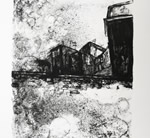
Omega Ultra polyester printing plates, manufactured by MacDermid Autotype, and originally developed as a low cost CTP solution for single and spot colour litho printing, have found a new application in the field of fine art printing. Use of these plates has been pioneered by the Faculty of Fine Arts at the University of Granada in Spain, where Omega Ultra is now being used to replace traditional metal and stone plate making processes, eliminating the need for toxic chemicals and giving artists greater flexibility and freedom of expression.
The University of Granada is the third largest university in Spain, being founded by Charles V in the early 16th century, and is widely recognised for a wide range of disciplines, including its Faculty of Fine Arts. Professor Bethania Barbosa B. de Souza, of the Faculty, explains, “For several years, the spectre of toxicity has emerged as a serious problem for our engraving artists, professors and printers in general. As a result, the Faculty of Fine Arts in collaboration with Juan Carlos Ramos-Guadix, Professor of metal-plate printmaking, has been investigating the use of non-toxic processes that are sustainable, environmentally-friendly and free of risks for the health and safety of users”.
Professor de Souza and his colleagues have experimented with a variety of materials from different suppliers, but eventually discovered that Omega Ultra was the only printing plate capable of providing the combination of characteristics required. “Omega Ultra allows us to develop a new approach that can be called non-toxic lithography”, explains Professor de Souza. “Compared with traditional plates, Omega Ultra offers many advantages for our lecturers and artists, and is allowing us to develop new procedures and tools that we could never dream of when using traditional techniques.
For example, Omega Ultra enables our artists to work quickly and directly with full freedom of expression; this liberates the artist from technical matters, making it possible to concentrate on the creative process, while retaining full control of production. Once the image has been prepared on the Omega Ultra plate, this is ready for inking and printing. The plates do not require mechanical or chemical etching, or the use of any toxic products such as resin or hydrocarbons, which are normally associated with traditional procedures applied to both stone and aluminium plates. Nor do they require any developing process using corrosive agents, as is the case with photosensitive metal plates.”
Staff at the Faculty of Fine Art have found that the Omega Ultra plates can be inked using any of the standard products for direct photo metal-plate print systems. In particular, as long as pH levels are maintained between 5 and 5.5, it is possible to eliminate the problems of smudging in blank areas that were previously found with inked stone or aluminium plates. Additionally, to clean the matrix either an aqueous solution of gum Arabic can be used, or a vegetal-based cleaner. As a result, Omega Ultra plates provide a far healthier environment in the studio, where students, artists, professors and printers can now work in safety.
Professor de Souza adds, “Images created on the Omega Ultra polyester plates remain constant during the print run, offering excellent and sophisticated prints for all traditional methods of origination, including wet drawing procedures such as toner wash or resist, and dry procedures using markers, ballpoints and toner pencils. The plates perfectly reproduce both the delicate tones of washes and the fine lines and halftones of dry drawing”.
Apart from the traditional drawing techniques, the new polyester plates also allow artists to take a digital image and prepare a plate directly from a computer, using a laser printer. Professor de Souza points out that, “This concept is revolutionary, as it simplifies the steps involved in plate preparation and gives each artist tremendous freedom, both creatively and procedurally, helping them to consider new techniques such as hybridisation; for example, on a single plate the artist can create a palimpsest, making use of both pre-photographic and post-photographic techniques.”
Professor de Souza concludes, “Omega Ultra has opened up a wealth of opportunities for our artists. It is low cost, quick and simple to use, needs no toxic processes or chemicals, and is dimensionally stable; unlike photosensitive plates, Omega Ultra does not sag, neither does it oxidise like grained plates. Interestingly, although Omega Ultra was originally developed for use on small-format offset printing, the plates can be used effectively on the flatbed offset and intaglio presses that are used in the majority of lithographic artists’ studios. So, Omega Ultra is opening up new opportunities for fine art printers in both academic and commercial fields, using traditional lithographic and new computer based procedures”.
Professor de Souza and his colleagues have experimented with a variety of materials from different suppliers, but eventually discovered that Omega Ultra was the only printing plate capable of providing the combination of characteristics required. “Omega Ultra allows us to develop a new approach that can be called non-toxic lithography”, explains Professor de Souza. “Compared with traditional plates, Omega Ultra offers many advantages for our lecturers and artists, and is allowing us to develop new procedures and tools that we could never dream of when using traditional techniques.
For example, Omega Ultra enables our artists to work quickly and directly with full freedom of expression; this liberates the artist from technical matters, making it possible to concentrate on the creative process, while retaining full control of production. Once the image has been prepared on the Omega Ultra plate, this is ready for inking and printing. The plates do not require mechanical or chemical etching, or the use of any toxic products such as resin or hydrocarbons, which are normally associated with traditional procedures applied to both stone and aluminium plates. Nor do they require any developing process using corrosive agents, as is the case with photosensitive metal plates.”
Staff at the Faculty of Fine Art have found that the Omega Ultra plates can be inked using any of the standard products for direct photo metal-plate print systems. In particular, as long as pH levels are maintained between 5 and 5.5, it is possible to eliminate the problems of smudging in blank areas that were previously found with inked stone or aluminium plates. Additionally, to clean the matrix either an aqueous solution of gum Arabic can be used, or a vegetal-based cleaner. As a result, Omega Ultra plates provide a far healthier environment in the studio, where students, artists, professors and printers can now work in safety.
Professor de Souza adds, “Images created on the Omega Ultra polyester plates remain constant during the print run, offering excellent and sophisticated prints for all traditional methods of origination, including wet drawing procedures such as toner wash or resist, and dry procedures using markers, ballpoints and toner pencils. The plates perfectly reproduce both the delicate tones of washes and the fine lines and halftones of dry drawing”.
Apart from the traditional drawing techniques, the new polyester plates also allow artists to take a digital image and prepare a plate directly from a computer, using a laser printer. Professor de Souza points out that, “This concept is revolutionary, as it simplifies the steps involved in plate preparation and gives each artist tremendous freedom, both creatively and procedurally, helping them to consider new techniques such as hybridisation; for example, on a single plate the artist can create a palimpsest, making use of both pre-photographic and post-photographic techniques.”
Professor de Souza concludes, “Omega Ultra has opened up a wealth of opportunities for our artists. It is low cost, quick and simple to use, needs no toxic processes or chemicals, and is dimensionally stable; unlike photosensitive plates, Omega Ultra does not sag, neither does it oxidise like grained plates. Interestingly, although Omega Ultra was originally developed for use on small-format offset printing, the plates can be used effectively on the flatbed offset and intaglio presses that are used in the majority of lithographic artists’ studios. So, Omega Ultra is opening up new opportunities for fine art printers in both academic and commercial fields, using traditional lithographic and new computer based procedures”.
Similar articles
More from MacDermid Autotype
- New ultra fine emulsion for high specification printed electronics 9th September 2009
- MacDermid Autotype industrial films deliver award winning results for Reid Industrial Graphic Products 18th May 2009
- New hardcoat film from MacDermid Autotype offers stainless finish for keyboards and graphic panels 23rd April 2009
- Autostat from MacDermid Autotype provides electricity and water meters with long lasting, high quality finish 10th February 2009





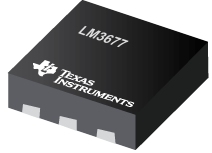

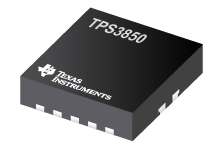
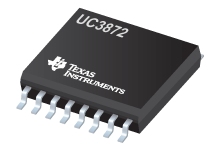
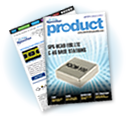
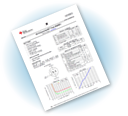

Write a comment
No comments